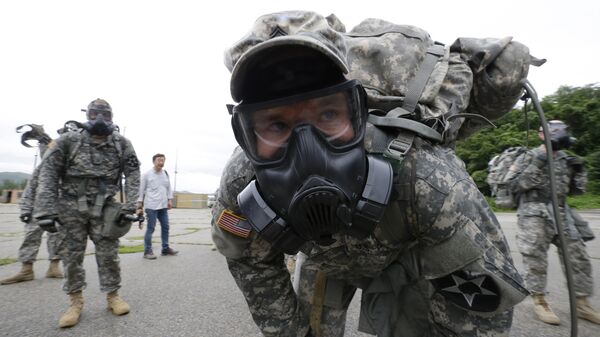Researchers at Northwestern University have discovered a nanomaterial that can destroy toxic nerve agents that pose a mortal danger to humans, part of a 10-year effort to develop uniforms that can protect their wearers against chemical weapons, Wired reported.
"With the correct chemistry, we can render toxic gases nontoxic," Omar K. Farha, an associate professor of chemistry in the Weinberg College of Arts and Sciences who led the research, said in a news release. "The action takes place at the nanolevel."
The composite material is a zirconium-based metal-organic framework (MOF), a lattice that traps organic molecules in its roomy pores. According to the release, the same mechanism that traps the nerve gas as it passes through the fabric also traps humidity from the air. The water then begins a reaction that breaks down the nerve agent into a harmless chemical in just a few minutes.

One interesting feature, according to Wired, is that perspiration actually helps the process along.
"MOFs can capture, store and destroy a lot of the nasty material, making them very attractive for defense-related applications," Farha, a member of the International Institute for Nanotechnology, explained. The research team’s work, titled “Integration of Metal-Organic Frameworks on Protective Layers for Destruction of Nerve Agents under Relevant Conditions,” was published in a recent edition of the Journal of the American Chemical Society.
Water also forms part of the process of neutralization used by the US Army to destroy its chemical weapons stockpiles, which is called supercritical water oxidation. The process includes both water and sodium hydroxide, better known as lye, which is essentially the same combination used to clean dirty grills and deep fryers. However, this process involves much higher concentrations of nerve agent, such as are found inside an artillery shell.
The research program is funded by the Defense Threat Reduction Agency, which is part of the Department of Defense, and the National Science Foundation.

